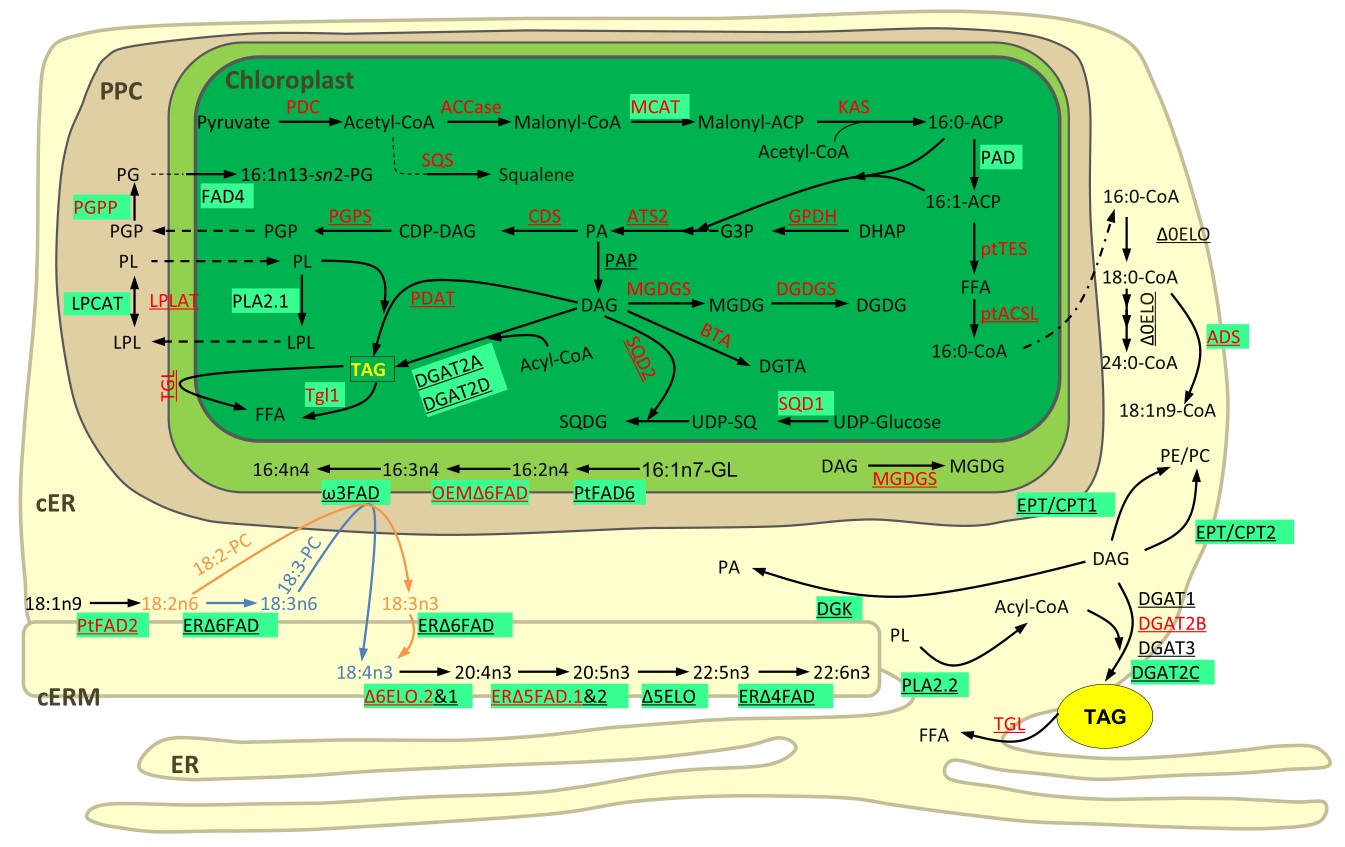Highlights
Proteomes Reveal Lipid Metabolic Network in Complex Plastid of Phaeodactylum tricornutum
Diatoms, one of the largest groups of marine phytoplankton, are responsible for ~20% of the primary productivity on Earth. Phaeodactylum tricornutum is one of the model diatoms with the capacity to accumulate eicosapentaenoic acid (EPA), fucoxanthin, and neutral lipids (mostly triacylglycerol, TAG) and thus is perceived as a microalgal cell factory for high-value products and oil production. P. tricornutum plastid is surrounded by four membranes, in contrast to chloroplasts of land plants. From the outermost to the innermost, the four membranes are the chloroplast endoplasmic reticulum (cER) membrane (cERM), the periplastidial membrane (PPM), and the outer and inner envelope membranes (OEM and IEM). Protein composition and function of the “complex” plastid remain mysterious.
Recently, a research team led by Prof. HU Hanhua from the Institute of Hydrobiology (IHB) of the Chinese Academy of Sciences obtained high-quality P. tricornutum plastids with a four-layered membrane, identified the proteins through a label-free quantitative proteomics approach, and reconstructed the main metabolic pathways based on the obtained data. This study was published in The Plant Journal.
In this study, the researchers obtained the P. tricornutum plastid-enriched fraction and identified 2850 proteins, including 92 plastid-encoded proteins, through label-free quantitative proteomic technology. Among them, the researchers further determined 839 nuclear-encoded proteins to be plastidial proteins based on the BLAST alignments within Plant Proteome DataBase and subcellular localization prediction, in spite of the contamination by mitochondria-encoded proteins and putative plasma membrane proteins. They reconstructed the metabolic pathways and highlighted the hybrid nature of this diatom plastid according to the proteomic data.
The researchers found that TAG hydrolysis and glycolysis, as well as photosynthesis, glycan metabolism, and tocopherol and triterpene biosynthesis, occur in the plastid. In addition, they found that the synthesis of long-chain acyl-CoAs, elongation, and desaturation of fatty acids (FAs), and synthesis of lipids including TAG are confined in the four-layered-membrane plastid based on the proteomic and GFP-fusion localization data. The whole process of generation of docosahexaenoic acid (22:6) from palmitic acid (16:0), via elongation and desaturation of FAs, occurs in the chloroplast endoplasmic reticulum membrane, the outermost membrane of the plastid. Desaturation that generates 16:4 from 16:0 occurs in the plastid stroma and outer envelope membrane. They also found that glycerolipids composition between whole cells and isolated plastids was similar, and the FA profile of TAG was not different based on quantitative analysis.
This study shows that the diatom plastid combines functions usually separated in photosynthetic eukaryotes, and differs from green alga and plant chloroplasts by undertaking the whole process of lipid biosynthesis.

A model illustrating the fatty acid biosynthesis and lipid metabolism in Phaeodactylum tricornutum (Image by IHB)
(Editor: MA Yun)